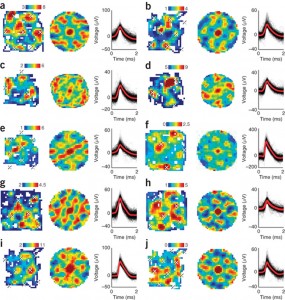A Drexel professor’s study on the existence of human grid cells in the brain was ranked No. 62 of Discover magazine’s top 100 science stories of the year.
Human grid cells, which the magazine called “the brain’s own GPS,” work by forming internal maps within the mind. They allow humans to navigate and store their navigations as memories.
The study was conducted with the cooperation of 14 hospital patients with severe epilepsy. When doctors find extreme cases of the neurological disorder, electrodes are implanted inside of the patient’s brain in order to identify the origin of seizure activity.

Joshua Jacobs, assistant professor in Drexel’s School of Biomedical Engineering, Science and Health Systems and lead researcher, stated that this situation also offers researchers like him the opportunity to study other functions of these patients’ brains.
“The patients have the electrodes implanted in their brains for about three weeks or so. During that period, in addition to monitoring their seizures, we can look at the same electrodes to understand how the brain works to understand memory and cognition,” Jacobs explained.
Because these patients could often not leave their beds, they were given a virtual navigation game to play on a laptop. This video game allowed the researchers to observe how the brain formed spatial memories.
In the game, the patients used a bike to navigate a virtual world. As they reached different locations within the simulation, the researchers were able to observe the patients’ brain activity and focus on regions that seemed to be more active in creating spatial memory.
Jacobs explained that two types of cells, grid cells and place cells, were found to be critical in the human mind to the process of forming spatial memory.
“Over 30 years ago, people discovered what are called place cells, which represent individual locations. Nine years ago, people discovered what are called grid cells that encode location also but in a different way and use grids. Whereas a place cell activates in one location only, each grid cell activates in many locations,” Jacobs said.
According to Jacobs’ research, grid cells form spatial memories and then store them in the place cells, which allow the brain to remember certain locations. He also said that the goal of his research was to locate these grid cells in the human brain. Though these cells had been found before in rats, they had not been identified in humans.
Jacobs said that further observation and a study of these human brain cells could lead to better treatments for those with Alzheimer’s disease and other degenerative or neurological brain diseases.
“I believe that navigation is one form of what this region does, but I believe that the same neural circuits that underlie navigation are also involved in other kinds of memory processes,” he said.
The processes of navigating the world and memory creation are closely tied. Patients with Alzheimer’s are found to have major impairment in the region of the brain where grid cells are found.
A better understanding of how this region of the brain network works could help improve the activity of these regions in Alzheimer’s patients, according to Jacobs.
Though Jacobs said that being ranked in Discover’s top 100 science stories of the year was very flattering, he also noted that gaining acknowledgment wasn’t a priority and his focus remained on the scientific gains made by his work.
“I’m really more focused on understanding how the brain works and understanding how we can use that knowledge to help people,” he said. “I kind of feel like that’s my real goal, to kind of help people. That’s what really gets me going everyday. That’s why I do this.”
The group first published the study in August 2013.


